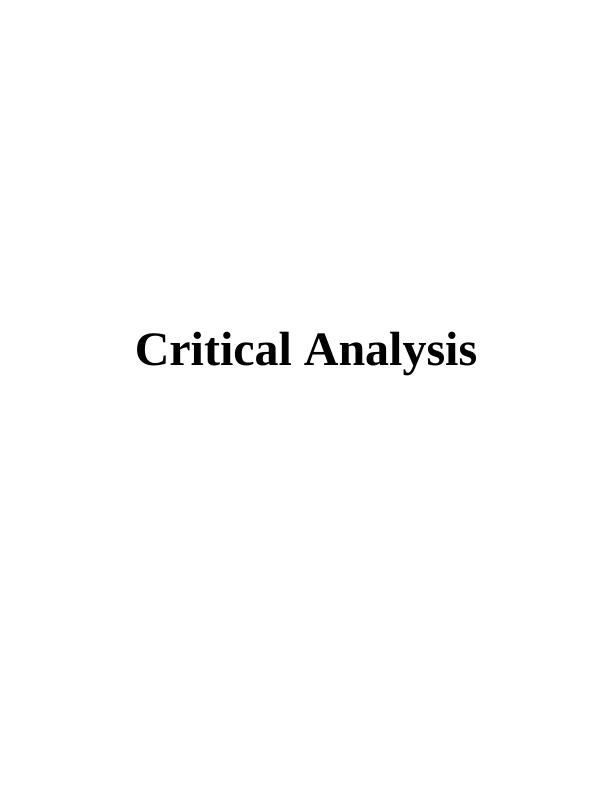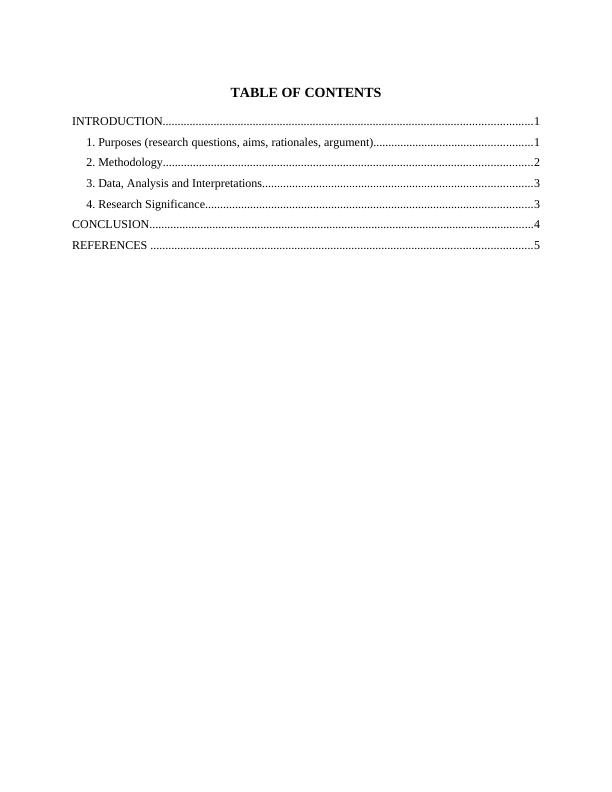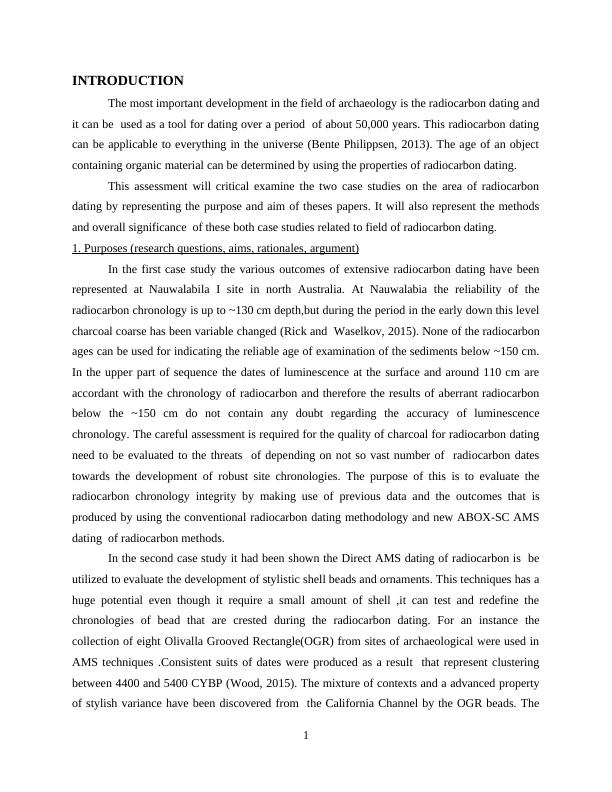Ask a question from expert
Extensive Radiocarbon Dating - Case Study
7 Pages2170 Words324 Views
Added on 2020-07-23
Extensive Radiocarbon Dating - Case Study
Added on 2020-07-23
BookmarkShareRelated Documents
Critical Analysis

TABLE OF CONTENTSINTRODUCTION...........................................................................................................................11. Purposes (research questions, aims, rationales, argument).....................................................12. Methodology...........................................................................................................................23. Data, Analysis and Interpretations..........................................................................................34. Research Significance.............................................................................................................3CONCLUSION................................................................................................................................4REFERENCES ...............................................................................................................................5

INTRODUCTIONThe most important development in the field of archaeology is the radiocarbon dating andit can be used as a tool for dating over a period of about 50,000 years. This radiocarbon datingcan be applicable to everything in the universe (Bente Philippsen, 2013). The age of an objectcontaining organic material can be determined by using the properties of radiocarbon dating.This assessment will critical examine the two case studies on the area of radiocarbondating by representing the purpose and aim of theses papers. It will also represent the methodsand overall significance of these both case studies related to field of radiocarbon dating. 1. Purposes (research questions, aims, rationales, argument)In the first case study the various outcomes of extensive radiocarbon dating have beenrepresented at Nauwalabila I site in north Australia. At Nauwalabia the reliability of theradiocarbon chronology is up to ~130 cm depth,but during the period in the early down this levelcharcoal coarse has been variable changed (Rick and Waselkov, 2015). None of the radiocarbonages can be used for indicating the reliable age of examination of the sediments below ~150 cm.In the upper part of sequence the dates of luminescence at the surface and around 110 cm areaccordant with the chronology of radiocarbon and therefore the results of aberrant radiocarbonbelow the ~150 cm do not contain any doubt regarding the accuracy of luminescencechronology. The careful assessment is required for the quality of charcoal for radiocarbon datingneed to be evaluated to the threats of depending on not so vast number of radiocarbon datestowards the development of robust site chronologies. The purpose of this is to evaluate theradiocarbon chronology integrity by making use of previous data and the outcomes that isproduced by using the conventional radiocarbon dating methodology and new ABOX-SC AMSdating of radiocarbon methods.In the second case study it had been shown the Direct AMS dating of radiocarbon is beutilized to evaluate the development of stylistic shell beads and ornaments. This techniques has ahuge potential even though it require a small amount of shell ,it can test and redefine thechronologies of bead that are crested during the radiocarbon dating. For an instance thecollection of eight Olivalla Grooved Rectangle(OGR) from sites of archaeological were used inAMS techniques .Consistent suits of dates were produced as a result that represent clusteringbetween 4400 and 5400 CYBP (Wood, 2015). The mixture of contexts and a advanced propertyof stylish variance have been discovered from the California Channel by the OGR beads. The1

End of preview
Want to access all the pages? Upload your documents or become a member.